| Listing 1 - 10 of 42 | << page >> |
Sort by
|
Book
ISBN: 3110601559 3110601508 Year: 2018 Publisher: De Gruyter
Abstract | Keywords | Export | Availability | Bookmark
 Loading...
Loading...Choose an application
- Reference Manager
- EndNote
- RefWorks (Direct export to RefWorks)
Aims and ScopeGrowing social and economic needs exert major pressures on landscapes, challenging preserved landscape values and the regional significance of places. As a result, the scope oflandscape management has broadened and diversifiedin response to international calls for greater landscape protection, and to existing and new challenges, such as thoserelating to climate change adaptation and ecosystem services. Within this context, landscape impact assessment and more in general landscape planning have been regarded as effective mechanisms for promoting and, at the same time, as the basis of sustainable landscape development. Set within the European context, thisbookaims to provide acontemporary review of landscape impact assessment theory and practice, looking at both the project and planning level. It coversthe overall process, content and scope of landscape impact assessment, including the main principles for good practice. Thisbook also provides guidance on a rangeof methods and techniques for different aspects of landscape impact assessment and public participation needs; and explains the advantages of close co-ordination between landscape impact assessment and landscape planning, especially in land use planning. Finally, a selection of case studies reviewing different aspects and practices of landscape impact assessment are reviewed.This book will be of interest to professionals involved in the day-to-day application of landscape impact assessment, as well as scholars and teachers working in the broad area of landscape planning andmanagement. The authors of thisbook have vast experiencein the research and practice of environmental assessment and landscape management.
Book
ISBN: 366263998X 3662639971 Year: 2022 Publisher: Berlin, Germany : Springer-Verlag,
Abstract | Keywords | Export | Availability | Bookmark
 Loading...
Loading...Choose an application
- Reference Manager
- EndNote
- RefWorks (Direct export to RefWorks)
Resilience (Ecology) --- Landscape ecology. --- Landscape assessment. --- Assessment, Landscape --- Environmental perception --- Landscape evaluation --- Landscape perception --- Perception, Landscape --- Human ecology --- Land use --- Landscape protection --- Ecology --- Ecological resilience --- Ecosystem resilience
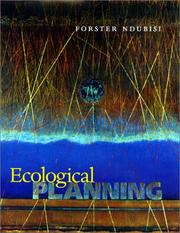
ISBN: 080187775X 9780801877759 9780801868016 0801868017 Year: 2002 Publisher: Baltimore Johns Hopkins University Press
Abstract | Keywords | Export | Availability | Bookmark
 Loading...
Loading...Choose an application
- Reference Manager
- EndNote
- RefWorks (Direct export to RefWorks)
For this reason he offers guidance as to when it may be appropriate for landscape architects and planners to emphasize one approach rather than another.
Ecological landscape design. --- Landscape assessment. --- Landscape ecology. --- Ecology --- Assessment, Landscape --- Environmental perception --- Landscape evaluation --- Landscape perception --- Perception, Landscape --- Human ecology --- Land use --- Landscape protection --- Ecologically sound landscape design --- Environmentally sound landscape design --- Applied ecology --- Landscape design
Book
ISBN: 1317118669 1317118650 1280876905 9786613718211 1409429725 9781409429722 1409429717 9781409429715 9781409429715 1315587890 9781317118664 9781317118657 9781280876905 6613718211 Year: 2012 Publisher: Farnham Ashgate Publishing Ltd
Abstract | Keywords | Export | Availability | Bookmark
 Loading...
Loading...Choose an application
- Reference Manager
- EndNote
- RefWorks (Direct export to RefWorks)
Describing the ways landscapes are perpetually shaped by the engagements and practices of their inhabitants, this innovative volume develops a processual approach to both perception and imagination. But it also brings out the ways in which these processes, animated by the hopes and dreams of inhabitants, increasingly come into conflict with the strategies of external actors empowered to impose their own, ready-made designs upon the world. With a focus on the temporal and kinaesthetic dynamics of imagining, Imagining Landscapes foregrounds both time and movement in understanding how past, prese
Landscape assessment. --- Landscape changes. --- Geographical perception. --- Environmental perception --- Maps, Mental --- Mental maps --- Perceptual cartography --- Perceptual maps --- Perception --- Orientation (Psychology) --- Space perception --- Change, Landscape --- Geomorphology --- Assessment, Landscape --- Landscape evaluation --- Landscape perception --- Perception, Landscape --- Human ecology --- Land use --- Landscape protection
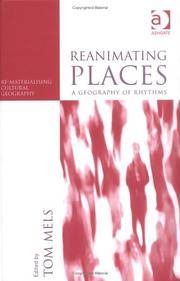
ISBN: 1138275336 1315245213 9781315245218 9781351906388 1351906380 9781351906371 1351906372 9780754641872 9781351906364 9781138275331 Year: 2016 Publisher: London New York Routledge
Abstract | Keywords | Export | Availability | Bookmark
 Loading...
Loading...Choose an application
- Reference Manager
- EndNote
- RefWorks (Direct export to RefWorks)
Geographical perception. --- Landscape assessment. --- Assessment, Landscape --- Environmental perception --- Landscape evaluation --- Landscape perception --- Perception, Landscape --- Human ecology --- Land use --- Landscape protection --- Maps, Mental --- Mental maps --- Perceptual cartography --- Perceptual maps --- Perception --- Orientation (Psychology) --- Space perception
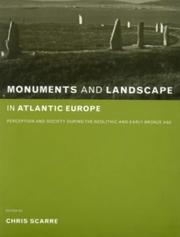
ISBN: 0415273137 0415273145 9780415273145 0203994051 9780203994054 9780415273138 9786610111763 6610111766 9781134482207 1134482205 9781134482153 1134482159 9781134482191 1134482191 1280111763 9781280111761 Year: 2002 Publisher: London New York Routledge
Abstract | Keywords | Export | Availability | Bookmark
 Loading...
Loading...Choose an application
- Reference Manager
- EndNote
- RefWorks (Direct export to RefWorks)
Atlantic Europe is the zone par excellence of megalithic monuments, which encompass a wide range of earthen and stone constructions from inpressive stone circles to modest chambered tombs. A single basic concept lies behind this volume - that the intrinsic qualities encountered within the diverse landscapes pf Atlantic Europe both informed the settings chosen for the monuments and played a role in determining their form and visual appearance. Monuments and Landscape in Atlantic Europe goes significantly beyond the limits of existing debate by inviting archaeologists from different cou
Neolithic period --- Bronze age --- Megalithic monuments --- Landscape assessment --- Europe, Western --- Antiquities. --- Europe [Western ] --- Antiquities --- Europe --- Civilization --- New Stone age --- Stone age --- Assessment, Landscape --- Environmental perception --- Landscape evaluation --- Landscape perception --- Perception, Landscape --- Human ecology --- Land use --- Landscape protection --- Cyclopean remains --- Antiquities, Prehistoric --- Monuments --- Religion, Prehistoric --- Neolithic period - Europe, Western. --- Bronze age - Europe, Western. --- Megalithic monuments - Europe, Western. --- Landscape assessment - Europe, Western. --- Europe, Western - Antiquities.
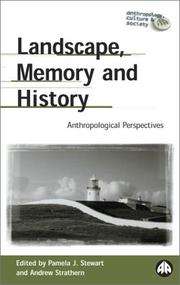
ISBN: 1783715316 184964165X 0585488983 9781849641654 9780585488981 9781783715312 074531967X 9780745319674 0745319661 9780745319667 Year: 2003 Publisher: London Sterling, Virginia
Abstract | Keywords | Export | Availability | Bookmark
 Loading...
Loading...Choose an application
- Reference Manager
- EndNote
- RefWorks (Direct export to RefWorks)
American, Australian and British scholars examine the significance of the use of landscape for studies of identity.
Landscape assessment. --- Landscape changes. --- Landscapes --- Geographical perception. --- Environmental perception --- Maps, Mental --- Mental maps --- Perceptual cartography --- Perceptual maps --- Perception --- Orientation (Psychology) --- Space perception --- Countryside --- Landscape --- Natural scenery --- Scenery --- Scenic landscapes --- Nature --- Change, Landscape --- Geomorphology --- Assessment, Landscape --- Landscape evaluation --- Landscape perception --- Perception, Landscape --- Human ecology --- Land use --- Landscape protection --- Social aspects.
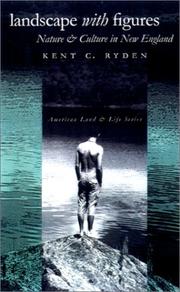
ISBN: 1587294060 9781587294068 0877457883 9780877457886 9780877457879 0877457875 Year: 2001 Publisher: Iowa City University of Iowa Press
Abstract | Keywords | Export | Availability | Bookmark
 Loading...
Loading...Choose an application
- Reference Manager
- EndNote
- RefWorks (Direct export to RefWorks)
Traveling across the invisible landscape in which we imaginatively dwell, Kent Ryden--himself a most careful listener and reader--asks the following questions. What categories of meaning do we read into our surroundings? What forms of expression serve as the most reliable maps to understanding those meanings? Our sense of any place, he argues, consists of a deeply ingrained experiential knowledge of its physical makeup; an awareness of its communal and personal history; a sense of our identity as being inextricably bound up with its events and ways of life; and an emotional reaction, positive
Landscape assessment --- Human ecology --- Assessment, Landscape --- Environmental perception --- Landscape evaluation --- Landscape perception --- Perception, Landscape --- Land use --- Landscape protection --- Ecology --- Environment, Human --- Human beings --- Human environment --- Ecological engineering --- Human geography --- Nature --- Social aspects --- Effect of environment on --- Effect of human beings on
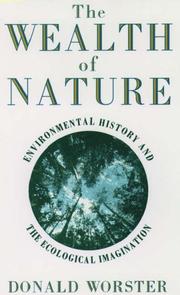
ISBN: 0197560695 0198023944 1280441836 1423738519 160256003X 9781423738510 9781602560031 9781280441837 9780195092646 0195092643 9780195076240 0195076249 Year: 1994 Publisher: New York Oxford Oxford University Press
Abstract | Keywords | Export | Availability | Bookmark
 Loading...
Loading...Choose an application
- Reference Manager
- EndNote
- RefWorks (Direct export to RefWorks)
Hailed as 'one of the most eminent environmental historians of the West' by Alan Brinkley in The New York Times Book Review, Donald Worster has been a leader in reshaping the study of American history. Winner of the prestigious Bancroft Prize for his book 'Dust Bowl', Worster has helped bring humanity's interaction with nature to the forefront of historical thinking. Now, in 'The Wealth of Nature', he offers a series of thoughtful, eloquent essays which lay out his views on environmental history, tying the study of the past to today's agenda for change.
Human ecology --- Ecology --- Environment, Human --- Human beings --- Human environment --- Ecological engineering --- Human geography --- Nature --- History. --- Social aspects --- Effect of environment on --- Effect of human beings on --- Landscape assessment --- Assessment, Landscape --- Environmental perception --- Landscape evaluation --- Landscape perception --- Perception, Landscape --- Land use --- Landscape protection
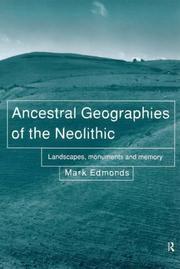
ISBN: 1134629346 1280333057 0203020197 020316962X 9780203169629 9780203020197 9780415076777 0415076773 9780415204323 0415204321 9786610333059 661033305X 9781134629343 9781134629299 113462929X 9781134629336 1134629338 9781280333057 Year: 1999 Publisher: London New York Routledge
Abstract | Keywords | Export | Availability | Bookmark
 Loading...
Loading...Choose an application
- Reference Manager
- EndNote
- RefWorks (Direct export to RefWorks)
Archaeological evidence suggests that Neolithic sites had many different, frequently contradictory functions, and there may have been other uses for which no evidence survives. How can archaeologists present an effective interpetation, with the consciousness that both their own subjectivity, and the variety of conflicting views will determine their approach. Because these sites have become a focus for so much controversy, the problem of presenting them to the public assumes a critical importance. The authors do not seek to provide a comprehensive review of the archaeology of all these caus
Neolithic period --- Earthworks (Archaeology) --- Human ecology --- Landscape assessment --- Assessment, Landscape --- Environmental perception --- Landscape evaluation --- Landscape perception --- Perception, Landscape --- Land use --- Landscape protection --- Ecology --- Environment, Human --- Human beings --- Human environment --- Ecological engineering --- Human geography --- Nature --- Excavations (Archaeology) --- Fortification, Prehistoric --- Social aspects --- Effect of environment on --- Effect of human beings on --- Great Britain --- Antiquities.
| Listing 1 - 10 of 42 | << page >> |
Sort by
|

 Search
Search Feedback
Feedback About UniCat
About UniCat  Help
Help News
News